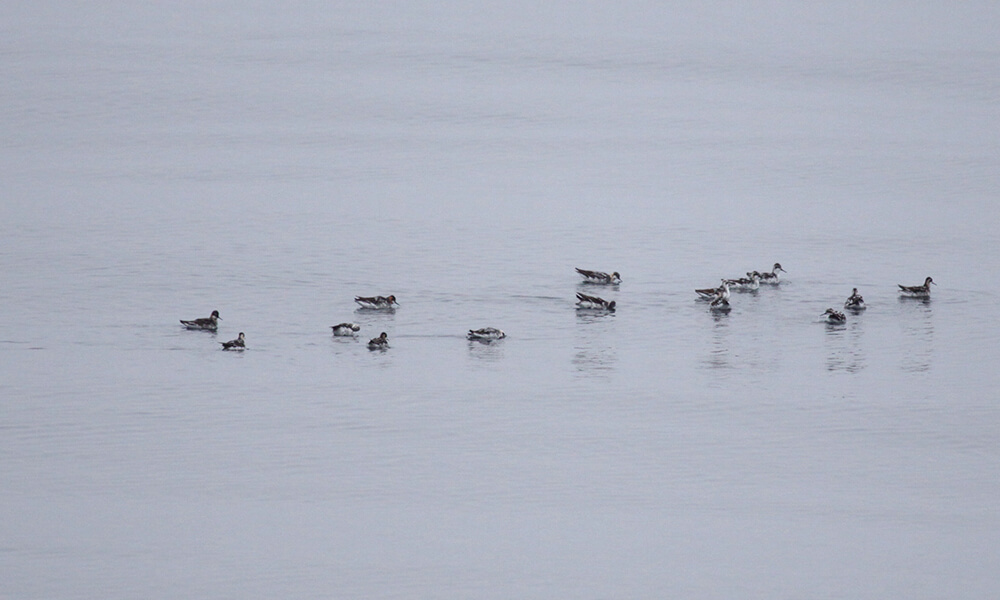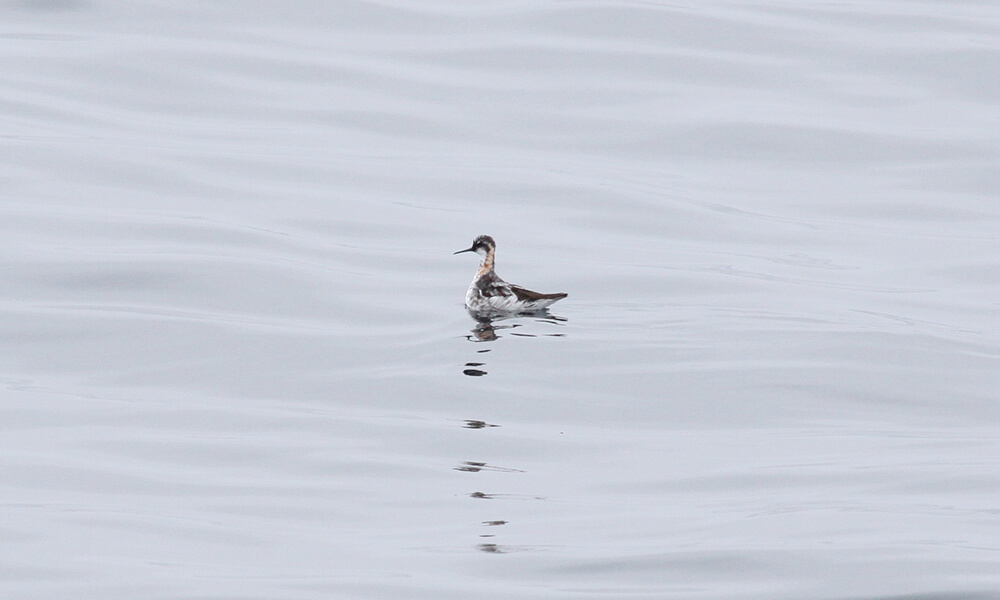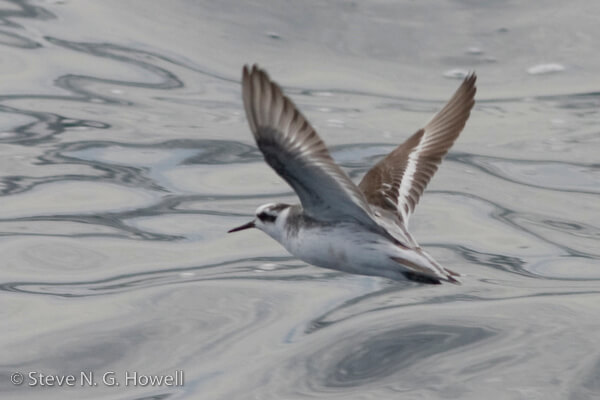Pelagic Shorebirds

Facts about predatory seabirds:
- They usually have narrow heads, small eyes, and long, slim necks that help them probe to feed.
- Some often run, especially short-legged species.
- Shorebirds have long, narrow, pointed wings that help them fly rapidly with direct movements.
Red-Necked Phalarope (Phalaropus lobatus)

- Wingspan: About 15 inches
- Home breeding territory: The red-necked phalarope breeds in the Arctic and subarctic tundra.
- Clutch size: 4 eggs
- Impacts: The red-necked phalarope is threatened by ongoing changes to habitat caused by increasing temperatures and other impact of climate change.
- Status: The 2018 IUCN Red List states they are of least concern.
- Fun fact: Females do the courting and the males incubate the eggs and care for the chicks. Once the female has made her selection, she defends the male from other females for as long as the eggs are being incubated. Once the chicks have hatched, the female deserts the male, and he alone will rear the young phalaropes.
Red Phalarope (Phalaropus fulicarius) (non-breeding)

- Wingspan: On average, 16.9 inches
- Home breeding territory: During breeding season red phalaropes are found in the high Arctic, near the coast, on low-lying wet tundra.
- Clutch size: Females usually lay four olive to buff eggs, blotched with black and brown.
- Threats: Suitable breeding habitat for red phalaropes is predicted to considerably decrease in area over the next century due to climate change.
- Status: The 2018 IUCN Red List states they are of least concern.
- Fun fact: Females do the courting and the males incubate the eggs and care for the chicks. Once the female has made her selection, she defends the male from other females for as long as the eggs are being incubated. Once the chicks have hatched, the female deserts the male, and he alone will rear the young phalaropes.
*Note
Red phalaropes are of the few bird species with reverse sexual dimorphism (females are
larger and brighter than males), similar to red-necked phalaropes.
Click here for more information on pelagic seabirds of Cordell Bank National Marine Sanctuary

